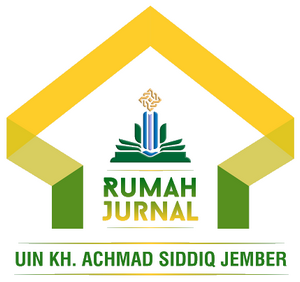Rhetoric Analysis of Alissa Wahid's Speech in the Webinar of Women Speak Religious Moderation on The Youtube Chanel Convey Indonesia
DOI:
https://doi.org/10.35719/annisa.v15i2.89This article discusses the Rhetoric Analysis of Alissa Wahid's Speech in the Women's Webinar Talking Religious Moderation on the Convey Indonesia YouTube Chanel, August 14, 2020. Alissa Wahid is the daughter of the 3rd former president of Indonesia, KH. Abdur Rahman Wahid, who called Gus Dur, is the Father of Tolerance in Indonesia and is also the coordinator of the Indonesian Gusdurian Network. It is important to analyze it because the presentation in the webinar discusses Religious Moderation and Women as Actors, and how women become actors who drive society. For this reason, researchers use descriptive qualitative methods through an interpretive paradigm. The data collection technique is watching, listening, reading, and taking notes. the analysis by interpreting the concept of persuasion and the five laws of Aristotelian rhetoric. The analytical technique used is the Miles, Huberman, and Saldana model, namely data collection, data condensation, data presentation, and leverage. The results showed that there were three persuasive rhetoric’s, those are Forensic Rhetoric, Demonstrative Rhetoric, and Deliberative Rhetoric used by Alissa Wahid. Furthermore, the findings on Alissa Wahid's speech contained a total of 41 data findings with details of 12 data from the concept of persuasive rhetoric and 15 data from the five principles of Aristotle's rhetorical law.
References
Ardiansyah, Moch Ferdy “Analisis Retorika Basuki Tjahaja Purnama Dalam Kampanye Rakyat Pemilihan Kepala Daerah Khusus Ibukota Jakarta di Rumah Lembang 2017 (Kajian Retorika Aristoteles)” Jurnal Bapala 5 (1) (2018):1-16.
Aristoteles. Retorika Seni Berbicara (Jakarta: Basabasi, 2018).
Convey Indonesia, “about us”, https://conveyindonesia.com/about-us/ (diakses tanggal 20 Maret 2022).
Convey Indonesia, “Perempuan Bicara Moderasi Beragama” https://www.youtube.com/watch?v=pn2N9nN1b2g (diakses tanggal 20 Maret 2022).
Damayanti, Eva. "Retorika Dakwah Pipik Dian Irawati." (Skripsi, Komunikasi dan Penyiaran UIN Syarif Hidayatullah Jakarta, 2014)
Fraenkel, Jack R. dan Wallen, Norman E., Educational Research: A guide to The Process. (London: Routledge, 2013).
Hartati, Prawita Rektor: UIN Jakarta Rumah Moderasi Beragama, https://ppim.uinjkt.ac.id/artikel/rektor-uin-jakarta-rumah-moderasi-beragama/ (diakses tanggal 20 Maret 2022).
Kementerian Agama RI, Moderasi Beragama, (Jakarta: Badan Litbang dan Diklat Kementerian Agama RI, 2019).
Kementerian Agama RI, Radikalisme Agama & Tantangan Kebanqsaan, (Jakarta: Direktur Jenderal Bimas Kementerian Agama RI, 2014).
Maarif, Zainul. Retorika Metode Komunikasi Publik (Jakarta: Rajawali Press, 2015).
Mahsun, Metode Penelitian Bahasa: Tahapan, Strategi, Metode dan Tekniknya (Jakarta: Rajawali Pers, 2014).
Morrisan, Teori Komunikasi Individu Hingga Massa, (Jakarta: Kencan Prenadamedia Group, 2014)
Miles, Matthew B., Huberman, A. Michael and Saldaña, Johnny. Qualitative data analysis: A methods sourcebook. 3rd. (London: SAGE Publications, 2014).
Sulistyarini, Dhanik & Zainal, Anna Gustina Buku Ajar Retorika. (Banten: CV AA. Rizky, 2020).
Wikipedia.com, “Alissa Qotrunnada,” https://id.wikipedia.org/wiki/Alissa_Qotrunnada, (diakses 20 Maret 2022).
Zaini, Ahmad. "Retorika Dakwah Mamah Dedeh dalam Acara “Mamah & Aa Beraksi” di Indosiar." Ilmu Dakwah: Academic Journal for Homiletic Studies 11.2 (2017): 219-234.
Downloads
Section
License
Copyright (c) 2022 Nova Saha Fasadena

This work is licensed under a Creative Commons Attribution-NonCommercial 4.0 International License.












 AN-NISA licensed under Creative Commons Attribution-NonCommercial 4.0 International License.
AN-NISA licensed under Creative Commons Attribution-NonCommercial 4.0 International License.